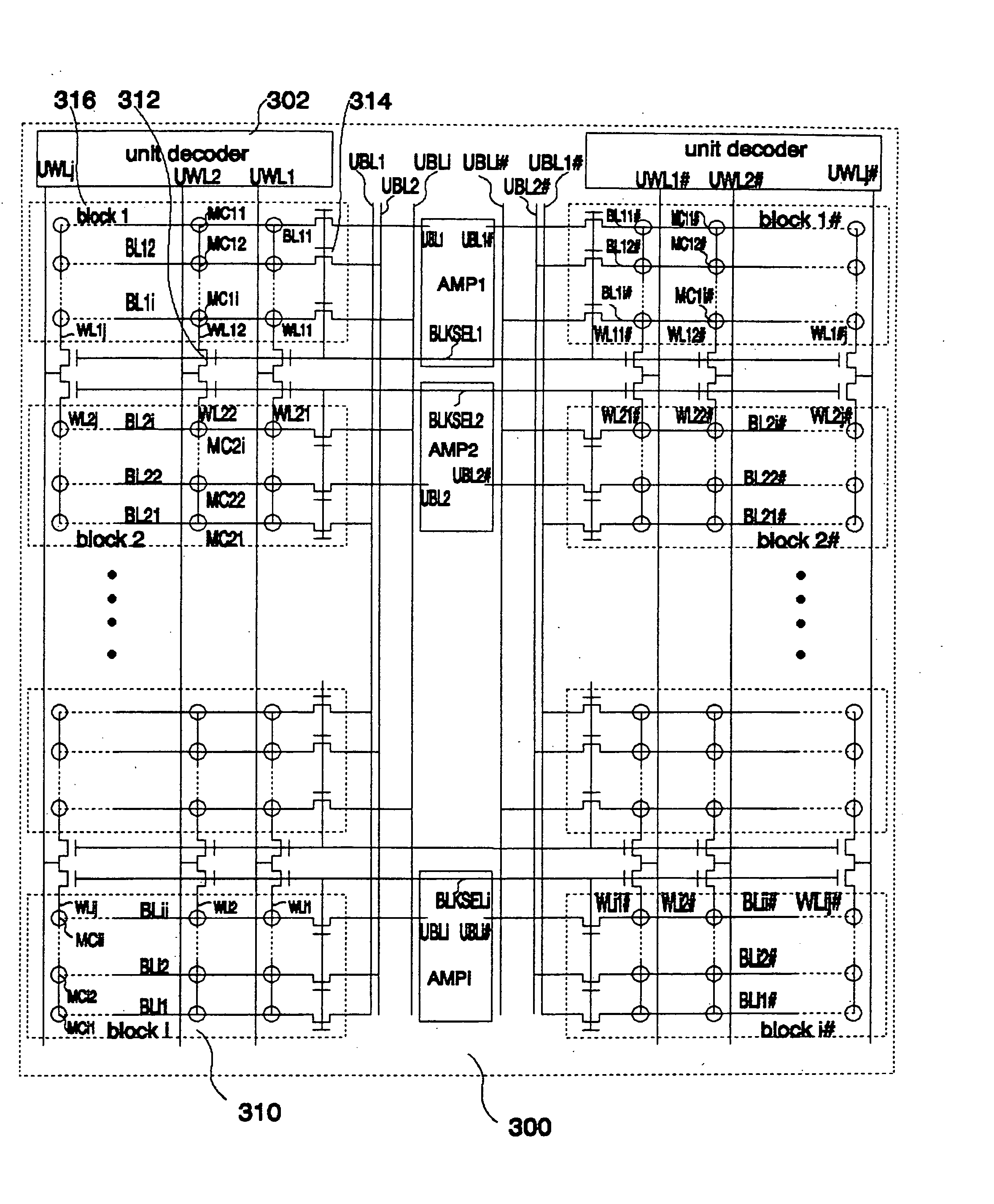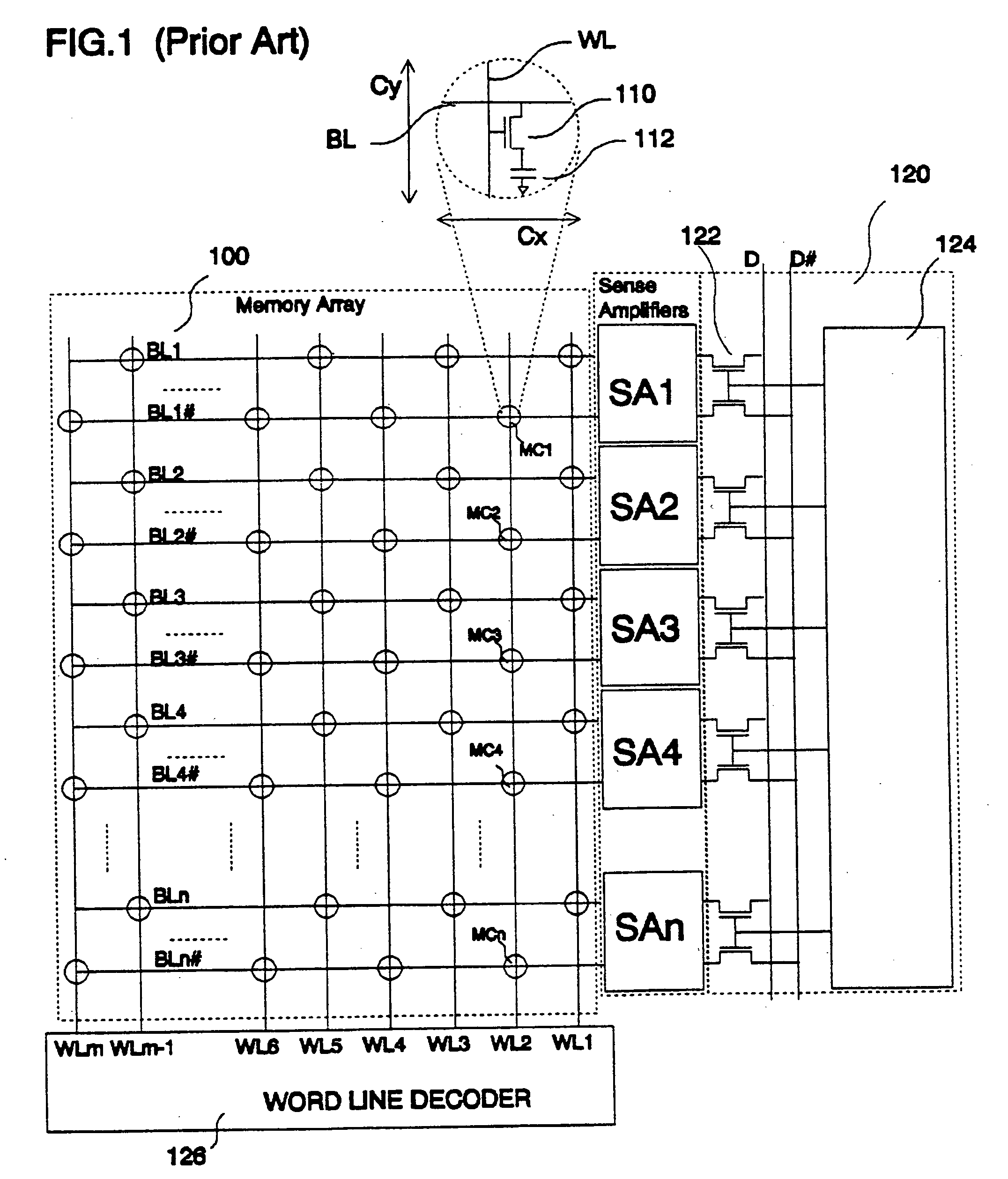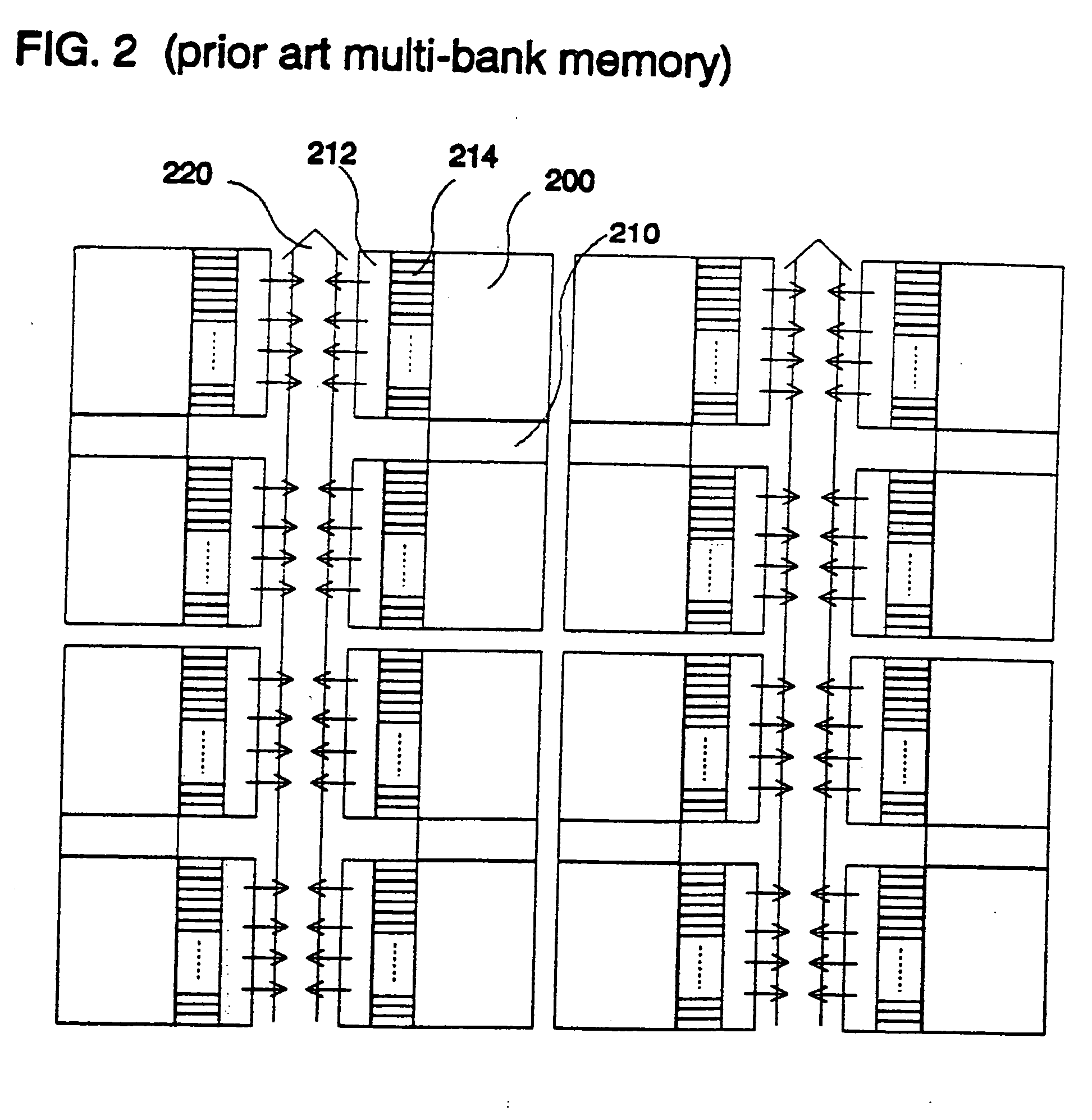High performance embedded semiconductor memory devices with multiple dimension first-level bit-lines
a semiconductor memory and embedded technology, applied in semiconductor devices, digital storage, instruments, etc., can solve the problems of low performance, low density, and low performance of current art drams, and achieve the effects of improving the performance of semiconductor memory devices, improving user experience, and simplifying system suppor
- Summary
- Abstract
- Description
- Claims
- Application Information
AI Technical Summary
Benefits of technology
Problems solved by technology
Method used
Image
Examples
Embodiment Construction
Before the invention itself is explained, a prior art semiconductor memory-device is first explained to facilitate the understanding of the invention.
FIG. 1 shows memory cell array structure of a prior art DRAM in both electrical and topographical manners. Memory cell array 100 includes plural pairs of bit lines BL1, BL1#; BL2, BL2#, BL3, BL3#; . . . ; BLn, BLn# (n; integer) which are disposed in parallel manner and a plurality of word lines WL1, WL2 . . . WLm (m; integer) which are disposed in parallel manner and also in such manner that they intersect with bit lines perpendicularly. At intersecting points, memory cells MC1, MC2, . . . , MCn are disposed. Memory cells are shown by circle marks in memory cell array 100 in FIG. 1. Each memory cell includes a switching field effect transistor 110 and memory cell capacitor 112. Bit line BL is connected to the drain of the transistor 110. The gate of transistor 110 is connected to word line WL. Sense amplifiers SA1, SA2, . . . SAn are...
PUM
 Login to View More
Login to View More Abstract
Description
Claims
Application Information
 Login to View More
Login to View More - R&D
- Intellectual Property
- Life Sciences
- Materials
- Tech Scout
- Unparalleled Data Quality
- Higher Quality Content
- 60% Fewer Hallucinations
Browse by: Latest US Patents, China's latest patents, Technical Efficacy Thesaurus, Application Domain, Technology Topic, Popular Technical Reports.
© 2025 PatSnap. All rights reserved.Legal|Privacy policy|Modern Slavery Act Transparency Statement|Sitemap|About US| Contact US: help@patsnap.com



